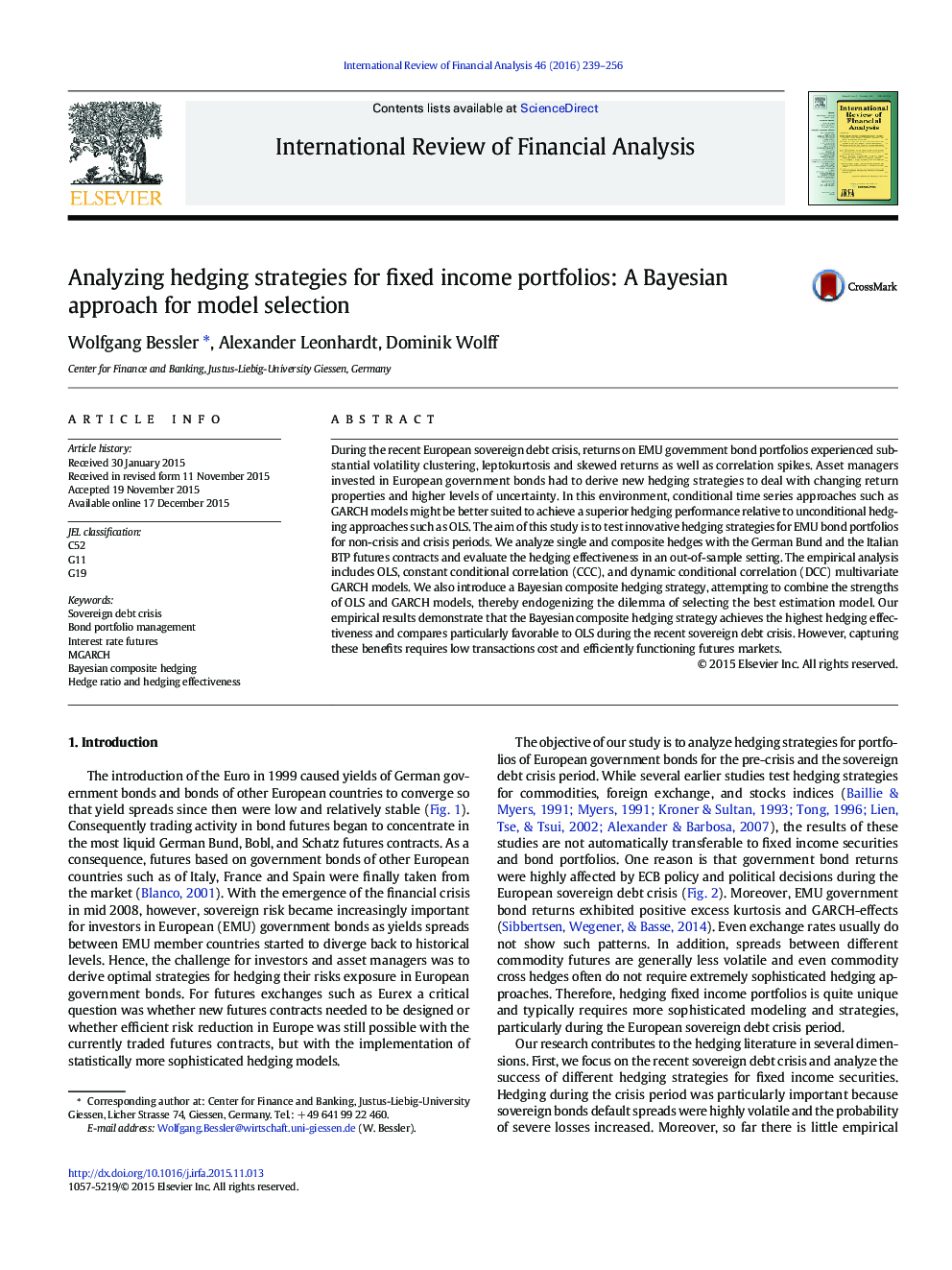| Article ID | Journal | Published Year | Pages | File Type |
|---|---|---|---|---|
| 5084588 | International Review of Financial Analysis | 2016 | 18 Pages |
â¢We develop and evaluate hedging strategies for EMU bond portfolios for non-crises and crises periods.â¢We analyze hedging strategies with the established German Bund futures and the newly introduced Italian BTP futures.â¢The empirical analysis includes OLS and multivariate GARCH models as well as a Bayesian composite hedging strategy.â¢The Bayesian composite hedging strategy was particularly beneficial during the recent sovereign debt crisis period.â¢Employing additional futures contracts is more important than using more elaborate methods to compute optimal hedge ratios.
During the recent European sovereign debt crisis, returns on EMU government bond portfolios experienced substantial volatility clustering, leptokurtosis and skewed returns as well as correlation spikes. Asset managers invested in European government bonds had to derive new hedging strategies to deal with changing return properties and higher levels of uncertainty. In this environment, conditional time series approaches such as GARCH models might be better suited to achieve a superior hedging performance relative to unconditional hedging approaches such as OLS. The aim of this study is to test innovative hedging strategies for EMU bond portfolios for non-crisis and crisis periods. We analyze single and composite hedges with the German Bund and the Italian BTP futures contracts and evaluate the hedging effectiveness in an out-of-sample setting. The empirical analysis includes OLS, constant conditional correlation (CCC), and dynamic conditional correlation (DCC) multivariate GARCH models. We also introduce a Bayesian composite hedging strategy, attempting to combine the strengths of OLS and GARCH models, thereby endogenizing the dilemma of selecting the best estimation model. Our empirical results demonstrate that the Bayesian composite hedging strategy achieves the highest hedging effectiveness and compares particularly favorable to OLS during the recent sovereign debt crisis. However, capturing these benefits requires low transactions cost and efficiently functioning futures markets.
